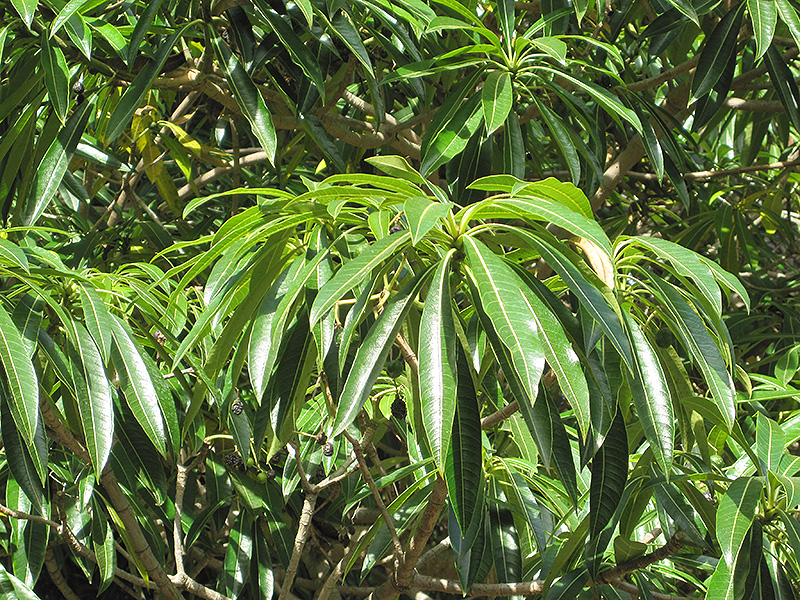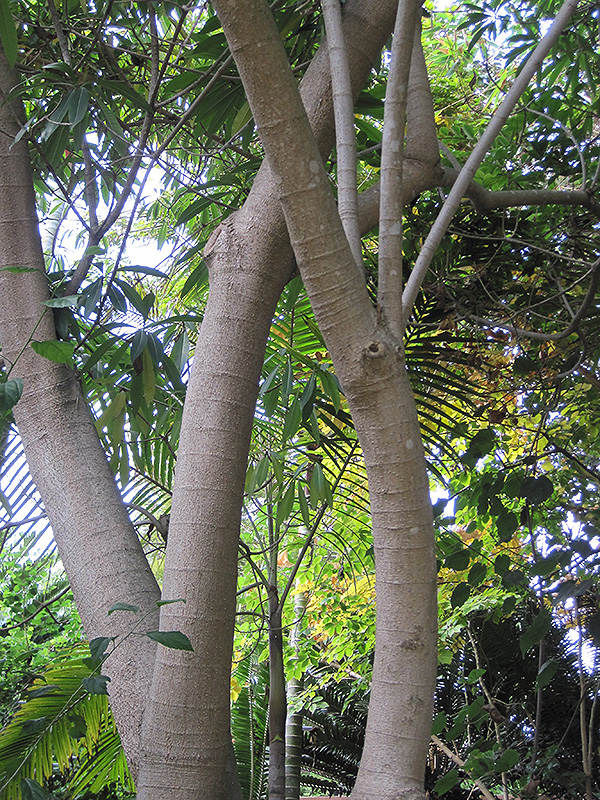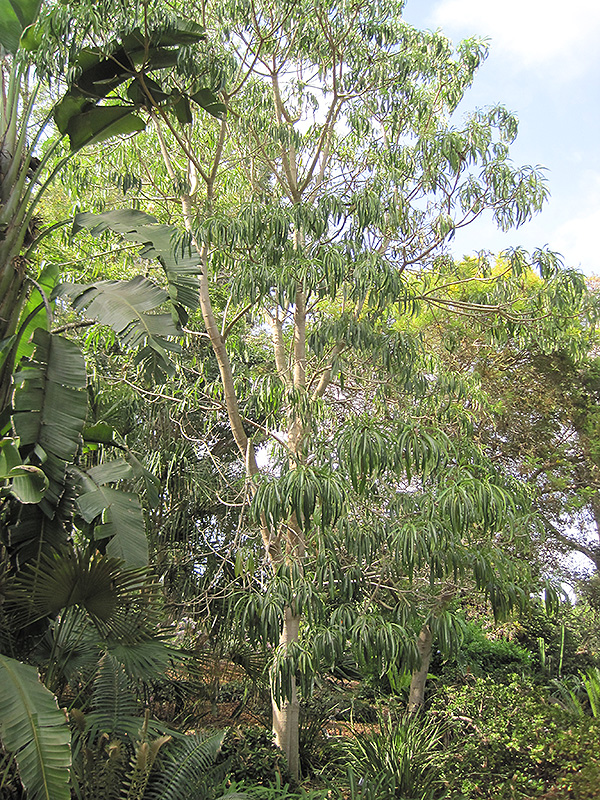Plant Finder
Height: 80 feet
Spread: 40 feet
Sunlight:
![]()
Hardiness Zone: 9a
Description:
This variety is a highly decorative, and neatly shaped shade tree with a dense, rounded crown; for larger landscape areas; fast growing and easily raised from seed
Ornamental Features
Quinine Tree features showy clusters of fragrant white star-shaped flowers at the ends of the branches from mid fall to late winter. It has attractive dark green foliage with light green undersides. The glossy narrow leaves are highly ornamental and remain dark green throughout the winter. The fruits are showy black drupes displayed in mid summer. The rough brown bark adds an interesting dimension to the landscape.
Landscape Attributes
Quinine Tree is a dense evergreen tree with an upright spreading habit of growth. Its average texture blends into the landscape, but can be balanced by one or two finer or coarser trees or shrubs for an effective composition.
This is a relatively low maintenance tree, and should only be pruned after flowering to avoid removing any of the current season's flowers. It is a good choice for attracting bees and butterflies to your yard. It has no significant negative characteristics.
Quinine Tree is recommended for the following landscape applications;
- Accent
- Shade
Planting & Growing
Quinine Tree will grow to be about 80 feet tall at maturity, with a spread of 40 feet. It has a high canopy of foliage that sits well above the ground, and should not be planted underneath power lines. As it matures, the lower branches of this tree can be strategically removed to create a high enough canopy to support unobstructed human traffic underneath. It grows at a fast rate, and under ideal conditions can be expected to live for 80 years or more.
This tree should only be grown in full sunlight. It prefers to grow in average to moist conditions, and shouldn't be allowed to dry out. It is not particular as to soil type or pH. It is somewhat tolerant of urban pollution. This species is not originally from North America.






